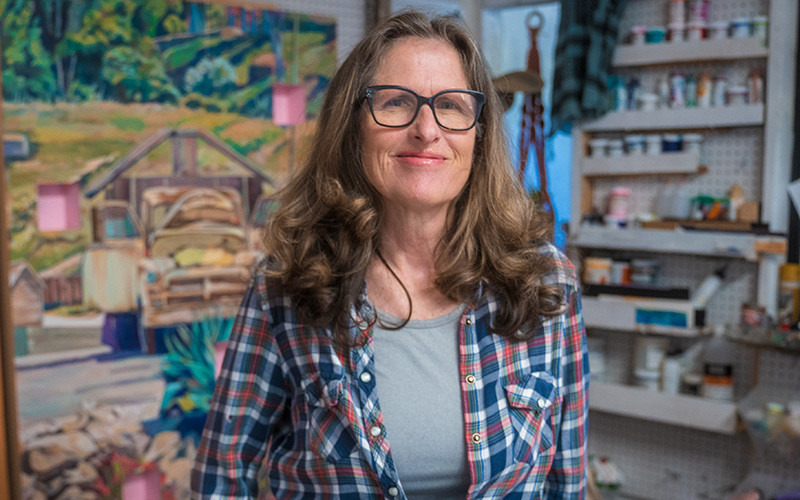 Get ready with painter Kate Joiner as she selects pieces, sets prices, and reaches out to collectors for an exhibition. Photo: © Noe Avila
Get ready with painter Kate Joiner as she selects pieces, sets prices, and reaches out to collectors for an exhibition. Photo: © Noe Avila
Over years of trial and error, Kate Joiner has built a creative life as vibrant as her signature California landscape paintings. Her artworks, crafted in acrylic on wooden panels, show sun-drenched California street scenes, elegant buildings, and laid-back beach vibes. You can almost feel the warm air coming off the surf in the bright pinks, greens, and blues she is fond of using.
This vision is clearly connecting with her audience: She is showing her work regularly, growing her collector base, and is meeting and sometimes exceeding the ambitious sales targets she sets for herself. With her background in sales and project management, Kate has leveraged all the tools at her disposal to create the life she is now leading.
When she’s preparing for a show, she needs robust ways to help her select work, itemize piece details and pricing, keep track of past collectors, and create labels and certificates of authenticity to add value to her work. As Kate explains, she has found one key tool that has helped her take care of all these tasks in one place: Artwork Archive. As she has reviewed all of Artwork Archive's features, she's found that it saves her time, makes her creative choices easier, and allows her to make more meaningful connections with collectors.
Read on as Kate walks us through the steps she takes when preparing for a successful show—and how she celebrates and recovers once all the hard work pays off. —Artwork Archive
Using an art show to boost sales, connection, and career satisfaction.
When it’s time to get ready for an art show, there’s a rhythm I fall into—a mix of organization, intuition, and a little bit of creative magic. Over the years, I’ve developed a system that helps me feel grounded and prepared, and a huge part of that system is a platform I’ve come to rely on: Artwork Archive.
It all starts with inventory. The first thing I do is open Artwork Archive and sort through what I currently have available. I filter my work by size, collection, and color to get an overall sense of my options. Then I dive deeper, paying attention to the feel of each piece—the color stories, the subjects, the emotional tone. I let the work speak to me about where it might belong.
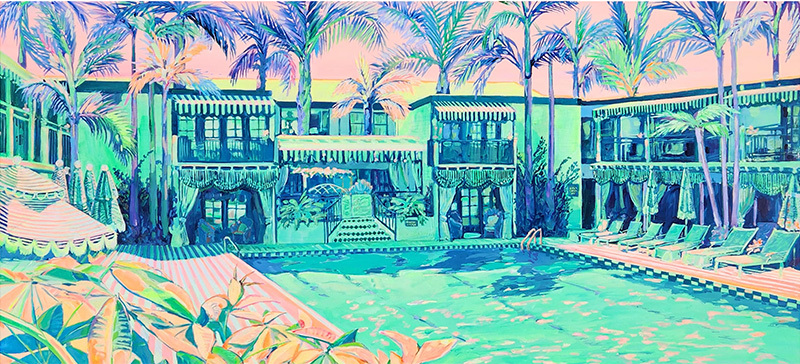 Kate Joiner, Lafayette Pool, 2025, Acrylic on Panel, 18 x 40 in
Kate Joiner, Lafayette Pool, 2025, Acrylic on Panel, 18 x 40 in
From there, I dig into past shows—especially if I’ve exhibited at the same location before. I look at previous years' sales at that venue and pay attention to what people gravitated toward. Sorting sales by location gives me a real sense of what the community there tends to connect with. It’s like tuning into the frequency of the audience before I even arrive.
Next comes curation. I create a Private Room in Artwork Archive and begin to drop in pieces I’m considering bringing. It’s a kind of digital staging area—a place where I can see how the artwork looks together, whether it feels balanced, and what kind of story it tells as a group. This is one of my favorite parts. It’s where the show starts to take shape in my mind.
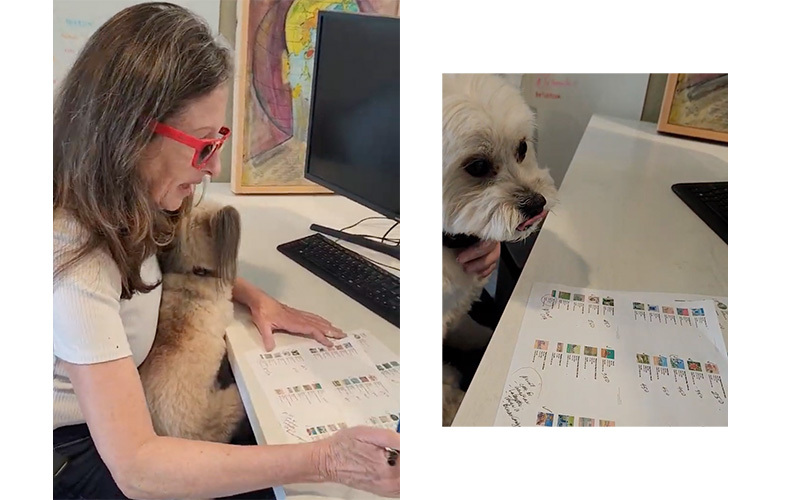 Kate works on her inventory with her furry studio assistant.
Kate works on her inventory with her furry studio assistant.
Once I have a rough idea of what I might bring, I open up Photoshop and start building a mock-up of my booth. I scale each piece to size and lay it out virtually, imagining the physical space. The layout changes—sometimes many times—between the planning stage and the actual event, but it helps me visualize the setup and, more importantly, avoid overpacking. It brings a sense of calm and clarity to what can otherwise be a chaotic lead-up.
Because I often work on multiple pieces at once (and commissions tend to pop up unexpectedly), I use a clever little trick in Artwork Archive to keep track of works in progress. I’ll duplicate an existing piece that’s the same size, like a 10x10, and leave the image blank or grayscale. That way, I have a visual placeholder for the work that’s in progress and meant for the show. As I complete each piece, I update the photo and add its title, watching those gray boxes slowly turn into finished art.
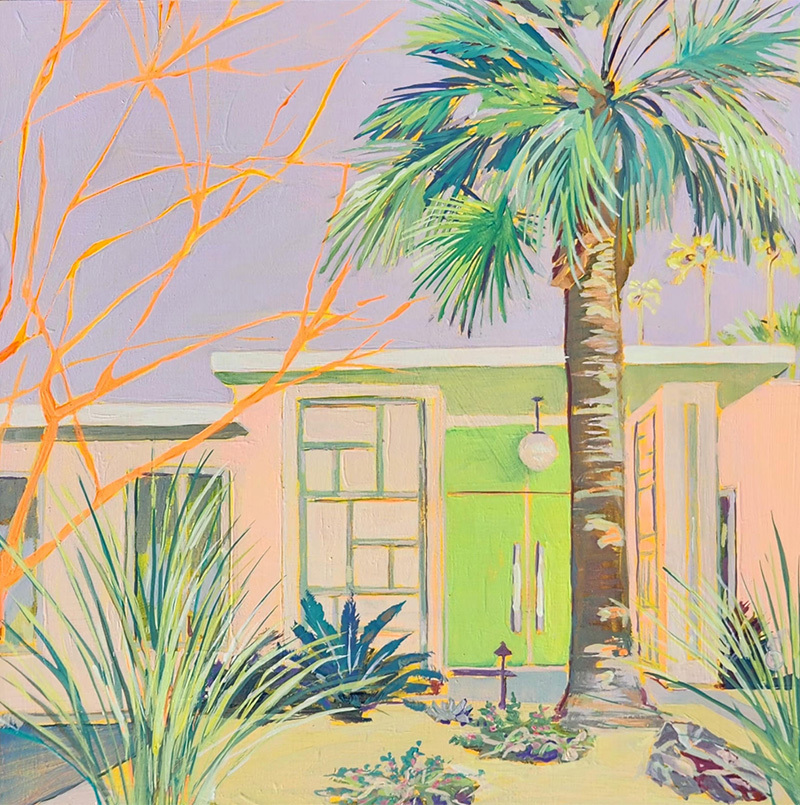 Kate Joiner, Palm Springs Door # 12, 2025, Acrylic on Panel, 12 x 12 x 1.5 in
Kate Joiner, Palm Springs Door # 12, 2025, Acrylic on Panel, 12 x 12 x 1.5 in
I also check inventory at other locations—galleries or shops that carry my work—to see what I might want to pull or swap out for the show. I’m lucky to work with partners who are flexible and supportive in this way. It helps me keep the booth cohesive and full of my best current work.
Around this time, I also like to update my blog section on my Public Profile within Artwork Archive. This is where I upload any recent press mentions, interviews, or features I’ve received. It’s such a great way to keep all my publicity in one place and ready to share with collectors, especially those who want to learn more about the story behind my work. It adds an extra layer of professionalism and context that I really value.
Make staying in touch with collectors as simple as possible:
A personal message to someone who has purchased your work before can often turn a one-time client into a repeat collector.
With Artwork Archive's Contact tools, you can easily see who has purchased your work before and who has expressed interest in a particular type of work.
You can add personal notes about where and when you meet a collector, you can create contact groups for different cities or different media, and even set reminders for when to reach back out to any contact.
About a week before the show, I start reconnecting with past collectors. I look at previous sales, pull up my contacts in Artwork Archive, and start reaching out. I make a few phone calls, send personalized emails, and let them know the event is coming up. I love telling them I’ll have new pieces that might complement what they already own—it makes the experience feel more personal, more curated.
I also do what I call a "memory check." I go through the photos I’ve saved of collectors with their artwork—something I started doing a couple of years ago—and review their faces. That way, if someone walks up to my booth, I can recognize them right away. Those photos live right in their contact profiles on Artwork Archive, which makes it easy to find them.
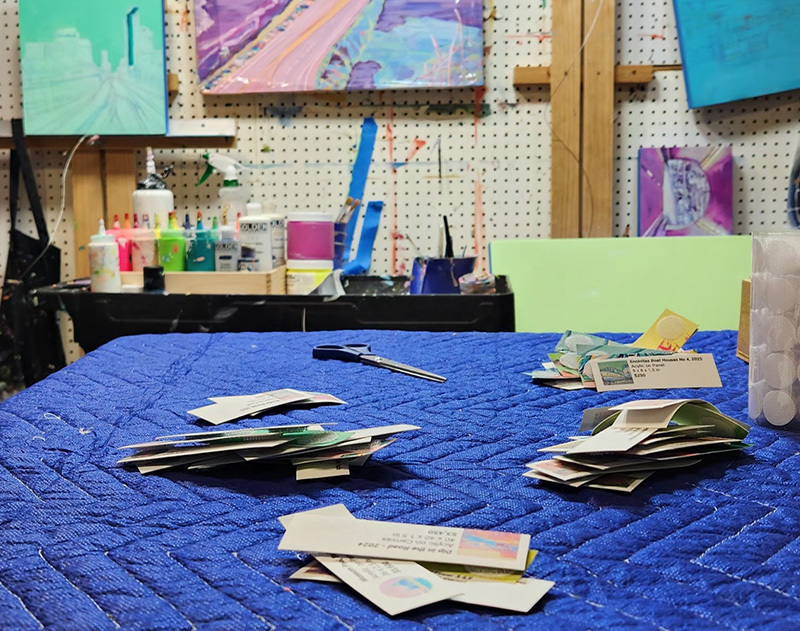 Creating professional-looking price tags and labels helps introduce Kate's work to new audiences.
Creating professional-looking price tags and labels helps introduce Kate's work to new audiences.
At the same time, I print out a Contact Report of previous buyers to bring with me. It’s a lifesaver when someone feels familiar, and I just can’t remember their name.
Then comes the prep for presentation. I print out price tags—this year I’m using old paper proofs for a heavier, more artistic feel—and attach them to my display panels with two-sided Velcro dots. I also print a photo inventory list and go through every detail, double-checking prices and making updates where needed. Since I’m raising my prices this year, I’m extra careful to make sure everything is consistent.
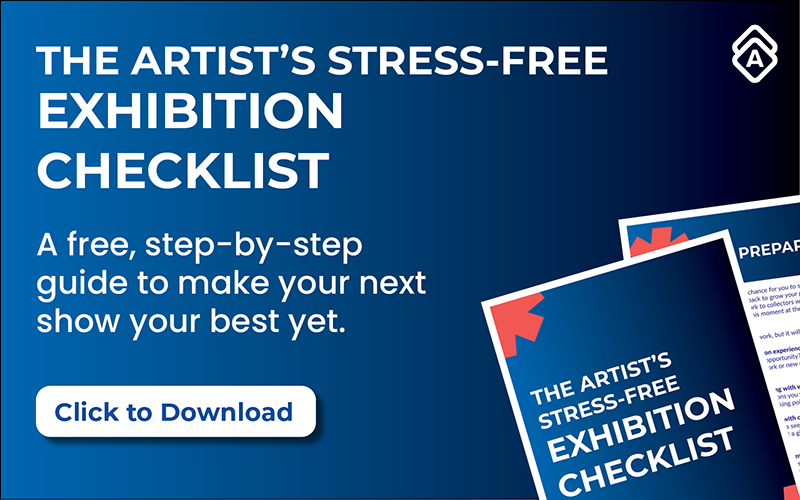 Download our free guide to acing your next exhibition, art walk, or fair.
Download our free guide to acing your next exhibition, art walk, or fair.
As the final week approaches, I go back to the private room I curated earlier and start editing it down. Some pieces get swapped out, some get cut, and new works I’ve finished may get added in. It’s the final shaping of the story I want to tell at the show.
I also prepare Certificates of Authenticity (COAs) for each original piece. Artwork Archive makes this easy—I use their built-in COA creator and customize the report so it includes all the information I want (and none of what I don’t, like pricing). I print them, stamp or emboss them for authenticity, and tuck them into a folder to bring with me.
Doesn't your work deserve a Certificate of Authenticity?
Creating a Certificate of Authenticity for your pieces can show collectors that you take your art practice seriously—and they should, too. Create one today.
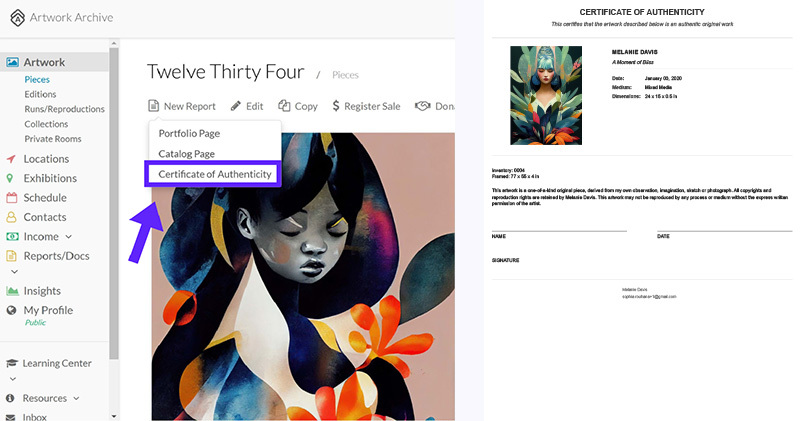
Finally, I assign all of the chosen pieces to a new location labeled in all caps—something like “ART WALK”—so I can keep track of exactly what’s heading to the event. This makes everything easy to reference in one spot.
And throughout all of this? I keep my thoughts positive. I write out a few manifestations, stay focused on the joy of sharing my work, and keep myself grounded. There’s something powerful about bringing intention into every step.
After the Show: Reflect, Recover, and Keep the Ball Rolling
Once the show wraps up and I’ve had a deep breath and maybe a glass of wine, I jump back into Artwork Archive to take care of post-show details.
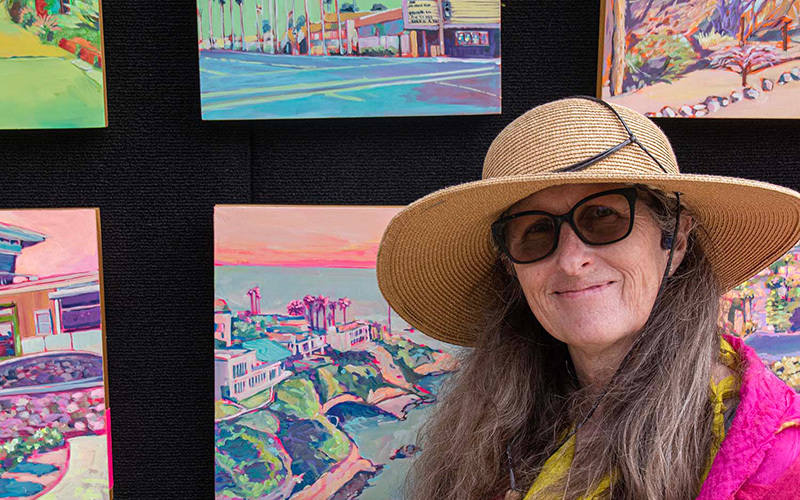 All the preparation that Kate puts into her shows is worth it when she can share her work, make new connections, and close sales.
All the preparation that Kate puts into her shows is worth it when she can share her work, make new connections, and close sales.
First, I add new contacts and, if I was able to take them, photos of collectors with their new pieces. I record all my sales, along with notes about conversations, special requests, or deposits made. Then I run a sales report to break down how the event went. I track which works were originals, which were prints, and get a clear picture of what sold and what resonated with people.
It’s a lot of work, but every part of this process helps me feel more confident and connected—both to my art and to the people who love it.
Kate Joiner’s Top Tips For Preparing For Your Next Art Exhibition:
- Failing to Plan Means Planning to Fail: The best shows don’t come about by accident—they take some thoughtful planning to make sure you’re meeting your goals and expressing your vision. You can start by sorting and filtering your available work and create a digital staging area using Private Rooms or Collections to visualize how pieces work together.
- Remember the Human Factor: Collectors aren’t walking pocketbooks, they’re people who want to feel a connection to you and your art. Reach out ahead of shows, let them know you remembered their support in the past, and suggest work that might resonate with them in your new show. It makes a lot of difference.
- Present Professionally: Create clear and complete labels for your work, have printed inventory lists for people to look at and take with them, and always document your sales so you have a good paper trail for the next show. Pro-tip: collectors are often thrilled to receive a printed and signed Certificate of Authenticity with their purchase.





